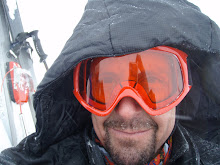
I had the opportunity to spend much of the last week exploring the far South. When I dream about Sweden, I usually think North…thus more time in the south is good for me—expands my idea and understanding of Sweden. And most valuable for me gives me a broader feel for the varied Swedish landscape.
First stop was a quick trip to Uppsala (not Southern Sweden) for a Fulbright lecture and tour of that historic city…
A city of Viking mounds, the oldest University in Sweden, the most important cathedral of Sweden, the burial place of Swedish kings and 'heroes'…for example, here is the Carl Linnaeus burial site in the Cathedral in Uppsala (just in case you are wondering, Linnaeus is the father of modern scientific binomial nomenclature…the Latin system for naming living things…)
From Uppsala it was south to the Swedish region of Blekinge. There does not seem to be a direct route and my travel to Blekinge required three train changes. The entire coast of Blekinge is defined by its islands.
The Friluftsliv I Förändring team met on one of the islands, Tjäro...here is where I stayed:


The gathering was the annual Spring meeting of the research team. I am very impressed by the organization and focus of this group, while the individual researchers are all engaged in different questions, the interconnections are strong. This meeting was particularly valuable for me in terms of testing my conceptualization of friluftsliv and seeking ideas for a few of the research questions I am juggling. I am very grateful to the team for their willingness to let me participate.
At the conclusion of the meeting, I caught a train deeper South. I traveled with one of my Friluftsliv collegues (Mattias Boman) to his home in Malmö, deep into the heart of Skåne.
Skåne is one of the Swedish cultural landscapes that take special pride in its distinct heritage. Back during the time period of war between Denmark and Sweden (hundreds of years of bloodshed), this region was at times ruled by a Danish King, and times the Swedish. You see the Danish medieval influence in architecture and you hear the strong dialect. The land is heavily agricultural and very flat…the coast is sand beaches, the forests are few and largely deciduous…here one can find beautiful beech forest!
Vitsippor in bloom everywhere!
The agricultural landscape is dotted with modern wind turbines and medieval churches. And the capital city of this region, Malmö, has a unique sense of contemporary urban design.
The most famous element of this new design is the skyscraper, the ‘Turning Torso’—a highly interesting building towering above the West Harbor and thus serving as a reference from most parts of the very flat city.
I found the Torso to be interesting, but not nearly as engaging as the infill neighborhood that surrounds it.
Like Göteborg, the empty spaces of a past ship building industry are slowly being reclaimed. The neighborhood is a jumble of contemporary styles, almost all interesting.
The landscape architecture and the relationship of the entire neighborhood to the sea is terrific. One can see over the water, Öresund, to Copenhagen. It is interesting to me to think about what nature feels like to someone living on dredged land in a highly engineered environment yet with such access to endless beach, sky and water…
I also wonder about the creative impact on a person of living in such interesting esthetic environment.
Mattias gave me a grand tour of the area around Malmö—from the frilufts (outdoor recreation) area outside of town where we ran 10 km through beautiful beech forest...to a small national park...to the old university town of Lund.
It is interesting to think of the new Sweden, as you travel around you meet people from all over the world who now make Sweden their home. Sweden has become a destination for immigration and Malmö is one of the places you see that diversity.
And another thing you can't help but notice in Lund and Malmö are the bikes! The cost of gas, coupled with environmental awareness and aided by the flat topography, makes for a bike-rich world.

So after an interesting and active tour through the South, I wearily returned home to Göteborg; one of the most striking images I noted pulling into town were the hills and rocks...a return to topography! The lovely hills of Göteborg...
























No comments:
Post a Comment